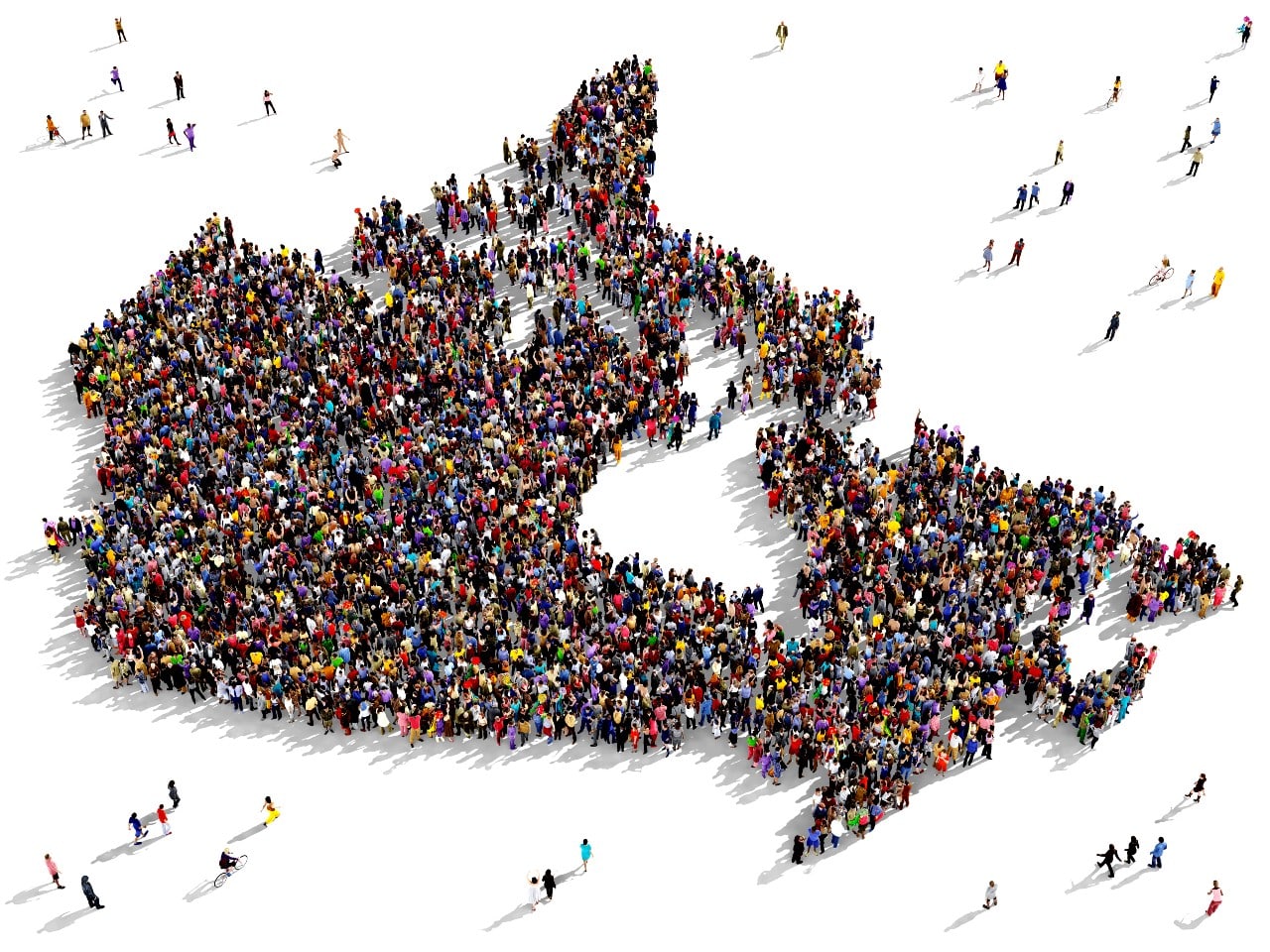There are many diverse communities and individuals here in Canada. We pride ourselves on being a country that’s supportive of diversity, but it’s no secret that all Canadians do not have equality. So many marginalized groups and individuals face financial and educational barriers. However, there are many programs working to support the needs of these underrepresented groups. While there is still more to do, these programs are working to bridge the gap and have a positive impact on Canadians.
Marginalized groups: What are they and who is a part of them
Marginalized groups are groups of people within a given culture, context and history. These groups are often at risk of discrimination. Consequently, they often face income, educational and career challenges. The discrimination can be due to their different personal characteristics, including:
- sex
- gender
- age
- marital status
- ethnicity
- religion or beliefs
- health status
- disability
- cultural beliefs
- sexual orientation
- gender identity
- education
- income
Discrimination against these diverse groups occurs everywhere, including in the workplace and schools. The disparity is visible in many government reports and surveys. It’s vital that we work to make Canada a more inclusive country. On the positive side, knowing where we are right now, is a big step toward change.
The state of marginalized groups in Canada
The First Report of the National Advisory Council on Poverty shows that 1 in 9 people in Canada live in poverty. Some groups that have high levels of poverty include:
- single individuals
- persons with disabilities
- children
- recent immigrants
- persons in sole-caregiver families
- First Nations People living on reserves
The Canadian Income Survey revealed that food insecurity is an issue for many people from these groups. For example, black people (39.2%) and indigenous people (33.4%) have the highest percentage of population facing food insecurity. Comparatively, those not part of a diverse community are the least likely to be affected by food insecurity.
Help is out there
Canada is working to provide support to these diverse communities. Many resources are available to support low-income and marginalized groups. They offer much-needed support with their finances and education. Below are some of the resources available and how marginalized groups can access help to create a brighter future.
Financial Support Programs
Canada has a range of programs to help marginalized individuals and families. These programs provide financial focus on supporting lower-income families and individuals in getting basic needs. There is still more to do, but knowing what support is available now is essential.
- The Canada Child Benefit (CCB) – Tax-free payments to families with children under 18. Household income, number, and age of children in the household impact monthly payments.
- Guaranteed Income Supplement (GIS) – Supports low-income seniors. It tops up their Old Age Security (OAS) pension. You can apply online or at a Service Canada location.
- Employment Insurance (EI) – Provides temporary financial support for individuals who have lost jobs.
- The Canadian Disability Tax Credit (CDTC) – Helps offset the costs associated with living with a disability. Those supporting an individual with a disability are also eligible.
- Provincial and territorial social aid programs – Programs like Ontario Works and Alberta Works offer financial aid to marginalized groups to access basic necessities.
Financial Education, Support and Counselling
To promote education and financial literacy, Canada has various initiatives that offer support.
- Non-profit organizations like Prosper Canada, Pathways to Education, and Indspire focus on providing financial education.
- Indigenous Business Development supports Indigenous entrepreneurs and business owners in Canada. If you are Indigenous and looking to start a business, be sure to learn more.
- The Financial Consumer Agency of Canada (FCAC) is an excellent resource. They provide training through webinars and workshops. They also have online resources to help increase your financial literacy. Check them out to learn more about budgeting, debt management, and savings strategies.
- Free income tax clinics help low-income families and individuals file their tax returns. This is critical. Many government financial support programs depend on your tax return.
- Community centers and libraries often host financial literacy workshops. These are usually low or no cost and open to all. Check out options in your areas to increase your financial education. They also provide the tools needed to help them with decision-making. They help individuals to break free from cycles of poverty.
- Canadian Mental Health Association (CMHA) provides access to mental help support and education. This can help start to close the mental health equity gap that comes from income disparity.
Educational scholarships and bursaries
Many marginalized students face financial barriers to pursuing higher education. Barriers that often delay or block them from their educational goals. With this in mind, many scholarships and bursaries are available targeting these diverse groups.
- The Indigenous Bursaries Search Tool assists Indigenous students in finding financial aid.
- Canada Student Grants and Loans program offers support to low-income post-secondary students.
- Various organizations offer scholarships to students. These are usually based on academic achievements, leadership, and community involvement.
Community-based financial support
Many community-based organizations and charities provide financial support. They often connect with local businesses and sponsors to offer relief programs. Members of the community also provide support by making donations. These programs include food banks, clothing drives, and support with utility bills.
Initiatives like micro-lending programs can also support entrepreneurs. Consequently, good business ideas become missed opportunities because they don’t have financial support. Many organizations focus on helping individuals from diverse backgrounds by offering access to small loans to start their own businesses.
Employment support and training
One of the best ways to help marginalized groups is by way of equal employment opportunities. Employment services provided by Employment and Social Development Canada (ESDC) connect job seekers. They also offer training programs to enhance employability. Generally, they support writing resumes, cover letters, and the job application process.
Provinces and municipalities also run job placement and vocational training initiatives. Often, they’re focused on helping marginalized communities develop the skills needed to enter the job market.
Conclusion
Canada is committed to supporting marginalized groups. This is clear with its wide offering of resources. Programs that provide monetary and educational support are an important focus. Educational support and community-driven initiatives are also key to change. With these resources, individuals and families can work to build a brighter future.
Please lean into the resources and support available to you if you need them. Create an action plan that helps you to achieve your financial and educational goals. Above all, know that you are not alone. There are people and organizations out there that want to help you.










